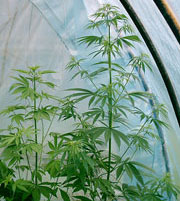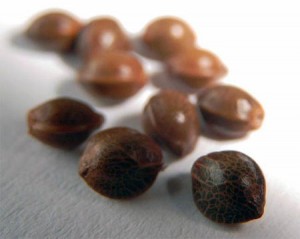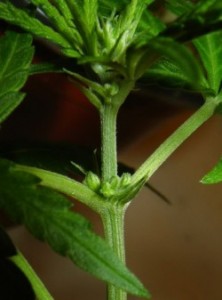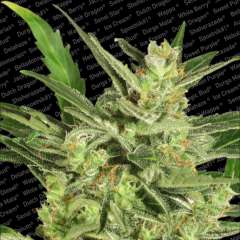 The key to successful cannabis horticulture is to understand exactly how marijuana produces food and grows healthily. Whether grown indoors or outdoors, the requirements for cannabis horticulture remain the same.
The key to successful cannabis horticulture is to understand exactly how marijuana produces food and grows healthily. Whether grown indoors or outdoors, the requirements for cannabis horticulture remain the same.
The necessities of cannabis are light, air, water, nutrients, a growing medium, and heat to create the necessary energy to grow. Growing indoors, the requirements are the same, though it is necessary to be sure that you have the proper light spectrum, carbon dioxide (CO2), and air circulation for cannabis to grow and thrive.
When you have proper amounts of everything needed for proper cannabis horticulture the result is consistent and optimum levels of growth. Marijuana is normally grown as an annual plant, completing its life cycle within one (1) year so the seeds are planted in the spring and grown throughout the summer.
Growing larger and larger until fall, the plants begin to produce flowers and create seeds to continue the full life cycle of cannabis. In its natural state cannabis horticulture goes through distinct growth stages throughout its life cycle.
Marijuana Germination
 In the germination stage, after about 3 – 7 days, the seedlings sprout white-colored roots and begin to establish their root system in this stage of cannabis horticulture. Soon thereafter they were to grow stems and develop their first few leaves.
In the germination stage, after about 3 – 7 days, the seedlings sprout white-colored roots and begin to establish their root system in this stage of cannabis horticulture. Soon thereafter they were to grow stems and develop their first few leaves.
Moisture, heat, and air are the activators of the seed hormones (cytokinins, gibberellins, and auxins) during the germination life cycle of marijuana seeds. The hormones of the seed reside within the durable outer coating of the seed and the hormone cytokinin triggers cells to form and tells the gibberellins to grow in size. The embryo of the seed expands in size, utilizing the supply of food stored within the seed for growth.
Cannabis Seedling Growth
A single tap root is produced from the germination of the seed as it grows down through the soil or growing medium and then the root systems begin to branch out. While the roots grow below the surface, the stem branches upward, above the ground in search of the light for its growth.
Tiny rootlets in the root system draw in water and nutrients as the root system develops in size, helping to anchor the plant and create a foundation for its future growth. Seedlings need to receive about 16-18 hours of light for healthy, vigorous growth in the beginning stages of cannabis horticulture.
Marijuana Vegetative Growth
 During this stage of cannabis horticulture, the plants need a minimum of 16 hours of light to stay in the vegetative state; though a maximum lighting time of 24 hours a day, 7 days a week can also be used.
During this stage of cannabis horticulture, the plants need a minimum of 16 hours of light to stay in the vegetative state; though a maximum lighting time of 24 hours a day, 7 days a week can also be used.
In cannabis horticulture, as the plant matures, its root systems take on specialized roles – the center, older, and more mature roots contain a water transport system that may also store food for the plant.
The tips of the roots extend and push deeper and farther into the soil in search of nutrients and water to supply its growth. These single-celled root hairs are the essential key for plants to be able to uptake water and nutrients for growth.
The roots are extremely delicate and must be handled as quickly, gently, and carefully as possible if doing any kind of transplanting since they are prone to dry up and die very easily if they lack water. They may also be damaged by open air and sunlight if exposed for too long.
Similar to its root system, the cannabis stem grows and stretches higher and farther to catch more sunlight. In cannabis horticulture the plants will produce nodes and buds along its stem – depending if it is Sativa- or Indica-dominant strain – the nodes will be at varying distances between each node.
The central stem’s primary function is to transfer water and nutrients from its delicate root hairs up and throughout the entire cannabis plant. Lateral and side branches continue to branch out to develop buds and for the leaves to capture light.
Cannabis Pre-Flowering
Pre-flowers will begin to show around the fourth week into vegetative growth, depending on the strain in cannabis horticulture. It is around this time that you will usually be able to determine the sex of the plant. Between the fourth and sixth nodes is where you will usually be able to find the pre-flowers of the cannabis plant.
The male cannabis plant will develop tiny, smooth, egg-shaped pollen sacks while the female cannabis plant will develop small V-shaped white or pink hairs called pistils.
Sometimes it may be hard to tell which are male and female. If you are unsure then you can grow them for a longer period to ensure you can correctly identify the plant’s sex (male or female). If you want to ensure a seedless crop (sinsemilla), you will want to be sure to remove all males from your crop.
Marijuana Flowering
 In a natural growing environment outdoors, cannabis begins to flower in the fall when the days become shorter. Flowers begin to form during this last stage of growth, where leafy growth within the plant slows and flowers begin to form.
In a natural growing environment outdoors, cannabis begins to flower in the fall when the days become shorter. Flowers begin to form during this last stage of growth, where leafy growth within the plant slows and flowers begin to form.
The changing of the seasons signals hormone changes within the plant so they go from being in a vegetative state into a flowering or blooming stage of their life cycle. Seasonal changes and the flowering cycle of cannabis horticulture are in direct correlation to the light spectrum of the sun and the amount of time (or hours) the sun is out each day.
The flowering of cannabis is triggered by 12 hours of darkness and 12 hours of light every 24 hours. When left un-pollinated female flowers develop without seeds, called ‘sinsemilla’. Otherwise, when a female plant is fertilized with male pollen, the female flower buds will begin to develop seeds.
Let us know what you think.




Responses